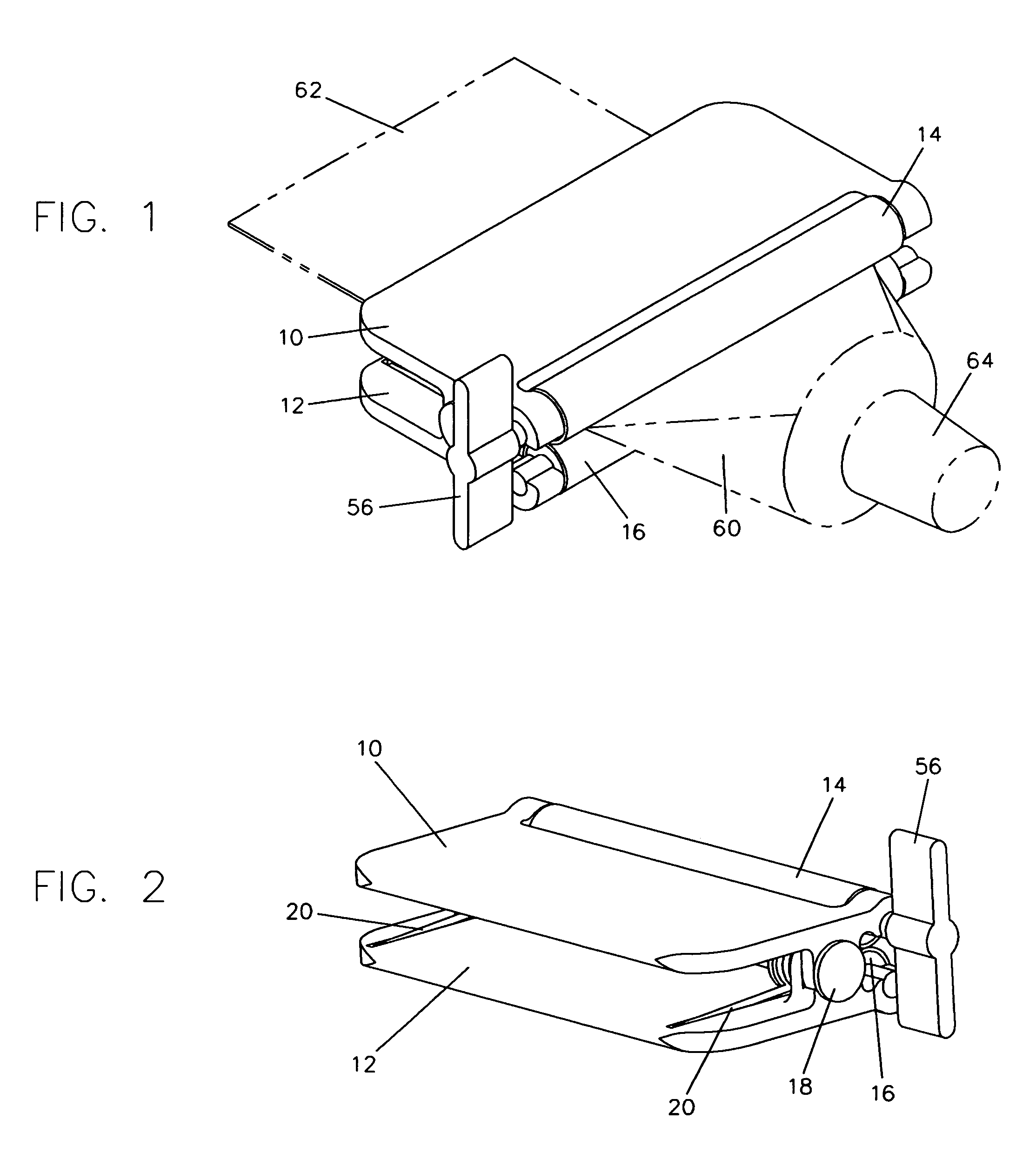Spring-loaded tube squeezing device
- Summary
- Abstract
- Description
- Claims
- Application Information
AI Technical Summary
Benefits of technology
Problems solved by technology
Method used
Image
Examples
Embodiment Construction
—DESCRIPTION
[0040]FIG. 1 shows a perspective view of a preferred embodiment of the tube squeezing device, along with a collapsible tube 60 with a crimped end 62 and a nozzle end 64 drawn in phantom and inserted in the proper orientation for use. FIG. 2 shows the tube squeezing device alone from a different perspective angle. Referring now to these two figures, the tube squeezing device consists of two identical opposed lever handles 10 and 12, attached together by two pintles 18. Only one pintle is shown in the figures, the other one being in mirror opposition to the one shown. Lever handles 10 and 12 are free to rotate about pintles 18. Pintles 18 additionally serve as pivots or anchors for two torsional springs 20. These springs have arms extending onto lever handles 10 and 12 for leverage. In the orientation of lever handles 10 and 12 shown in these figures, the arm extensions of torsional springs 20 are approximately parallel and the springs are in a torqued state. Forward of th...
PUM
 Login to View More
Login to View More Abstract
Description
Claims
Application Information
 Login to View More
Login to View More - R&D
- Intellectual Property
- Life Sciences
- Materials
- Tech Scout
- Unparalleled Data Quality
- Higher Quality Content
- 60% Fewer Hallucinations
Browse by: Latest US Patents, China's latest patents, Technical Efficacy Thesaurus, Application Domain, Technology Topic, Popular Technical Reports.
© 2025 PatSnap. All rights reserved.Legal|Privacy policy|Modern Slavery Act Transparency Statement|Sitemap|About US| Contact US: help@patsnap.com



